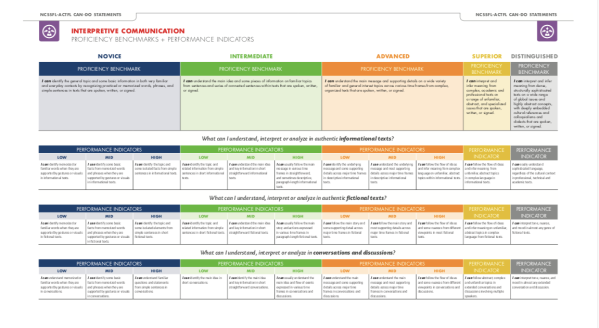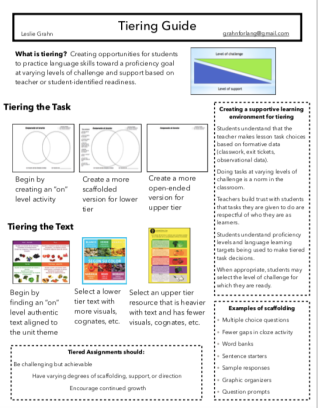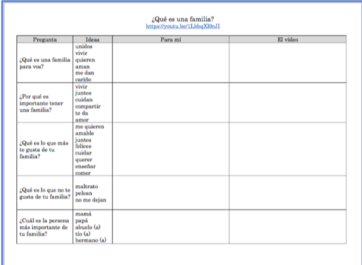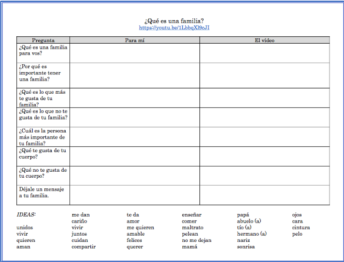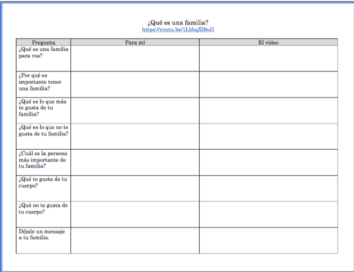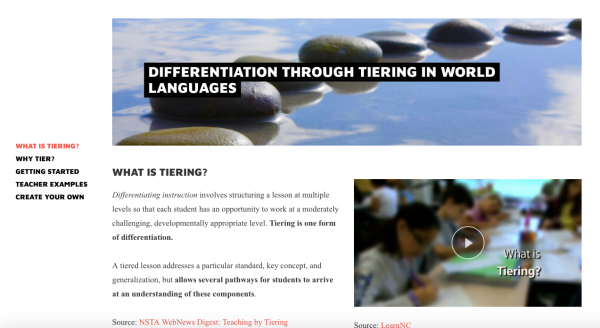Aligned with the ACTFL Core Practices for World Language Learning, language educators are encouraged to “guide learners through interpreting authentic resources.” Authentic resources are created by and for the target language users, either for information or entertainment.
We have heard the phrase “Adapt the task, not the text.” The idea behind that quote is that once we alter an authentic resource in any way, it is no longer authentic. So, teachers are challenged to offer language learners opportunities to interpret authentic resources at the correct challenge level. One way to accomplish that goal is through tiering.
First, think about the wide diversity of language learners in your classroom. In any one classroom, there are students who are at varying levels of
- language proficiency
- motivation and engagement
- and comfort with the target language classroom.
They are struggling learners, reluctant learners, disengaged learners, engaged learners, enthusiastic learners, and advanced learners and their needs are diverse and varied. Often, we assign tasks to our learners that are too difficult for some and far less challenging for others. This can cause frustration on the part of students and impact their level of commitment and engagement in tasks.
Next, we need to anchor ourselves in the ACTFL-NCSSFL Can-Do Statements and the ACTFL Performance Descriptors for Language Learners. These descriptors give guidance on what teachers can expect their students to be able to do with text based on their proficiency level.
Due to this wide diversity, teachers respond to their students’ needs on a continuum. From low challenge and high support to high challenge and low support as illustrated by the graphic below.
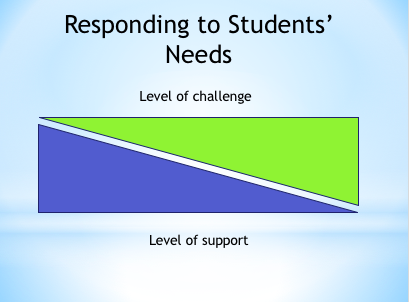
What are supports?
“Providing support to students in the form of models, examples, sentence frames, and task-specific target language expressions which are subsequently removed as students become more confident and independent with their learning.”
One way to meet the needs of the variety of language learners in the classroom, is through tiering. Tiering creates opportunities for students to practice language skills toward a proficiency goal at varying levels of challenge and support based on teacher or student-identified readiness.
Some examples of supports include:
- Multiple choice questions
- Fewer gaps in cloze activity
- Word banks
- Sentence starters
- Sample responses
- Graphic organizers
- Question prompts
How do I create tiered tasks?
Step 1: Select the authentic text for your students to interpret.
Step 2: Create an “on level” task.
Step 3: Create a more scaffolded task for struggling learners.
Step 4: Create a more open-ended task for advanced learners.
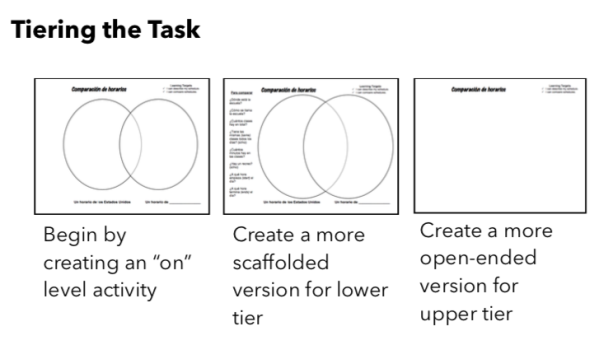
How do I decide which tier each student should be given?
- determine the students’ readiness level based on formative data (exit tickets, classwork, performances, etc.)
- allow students to choose their level of challenge
For more detailed information about tiering, download the Tiering Guide below:
Example of tiered tasks for authentic text:
In an intermediate level Spanish class, students have been focused on the question, “What is family?” The teacher selects a video called “¿Qué es una familia?” which is produced by the Subsecretaría de Niñez, Adolescencia y Familia – Jefatura de Gabinete de Ministros – Gobierno de La Provincia de Santiago del Estero, Argentina.
The teacher creates tiered tasks for the video. She creates
- an “on level” worksheet that provides a word bank at the bottom,
- a version for struggling learners that provides a word bank for each question,
- and a more open-ended version for advanced learners and heritage speakers that provides no word banks.
Students view the video and take notes on their worksheets. After, students are placed in mixed-readiness groups and each group receives one of the questions from the worksheet written on a large piece of chart paper. The group records their responses for the question on the chart paper.
When time is called, student groups rotate through the other questions, reading the responses written by previous groups and adding new ideas.
Once all groups have made the full rotation, the posters are displayed around the room. Each student selects one question on which he/she would like to create an oral presentation which they will record next class.
Tier 1:
Tier 2:
Tier 3:
More examples of tiered tasks can be found at: https://www.grahnforlang.com/tiering-tasks-and-text.html
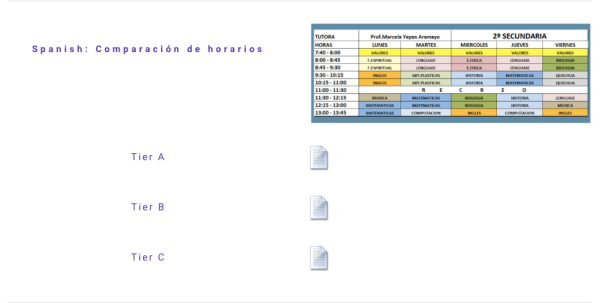
How can I learn more about tiering?
http://worldlanguagetiering.weebly.com/

